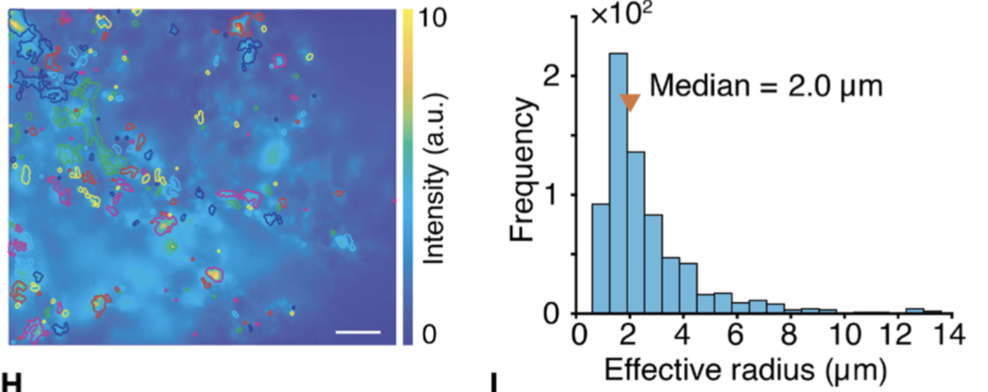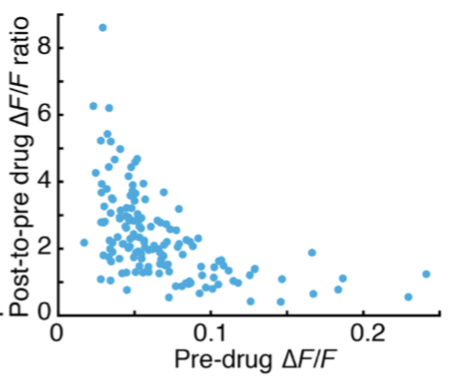Neuromodulation plays a critical role in brain function in both health and disease, and new tools that capture neuromodulation with high spatial and temporal resolution are needed. Here, we introduce a synthetic catecholamine nanosensor with fluorescent emission in the near infrared range (1000–1300 nm), near infrared catecholamine nanosensor (nIRCat). We demonstrate that nIRCats can be used to measure electrically and optogenetically evoked dopamine release in brain tissue, revealing hotspots with a median size of 2 µm. We also demonstrated that nIRCats are compatible with dopamine pharmacology and show D2 autoreceptor modulation of evoked dopamine release, which varied as a function of initial release magnitude at different hotspots. Together, our data demonstrate that nIRCats and other nanosensors of this class can serve as versatile synthetic optical tools to monitor neuromodulatory neurotransmitter release with high spatial resolution.
Abraham G. Beyene, et al., Imaging striatal dopamine release using a nongenetically encoded near infrared fluorescent catecholamine nanosensor, 5(7) Science Advances eaaw3108 (2019)(local PDF).

